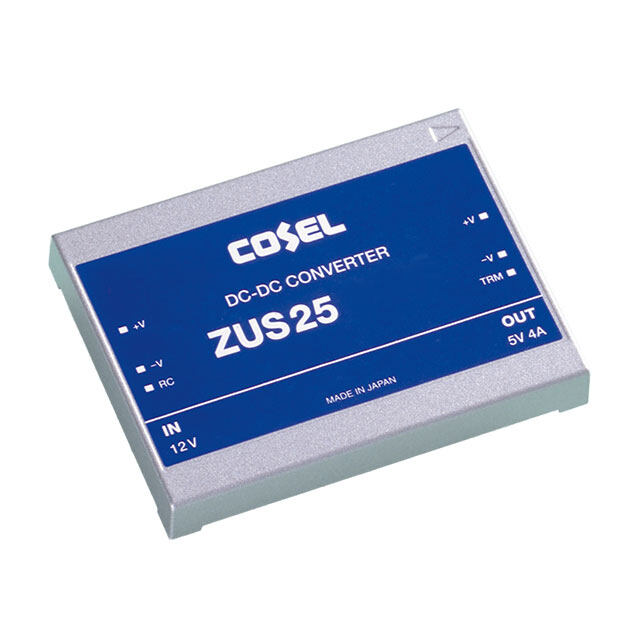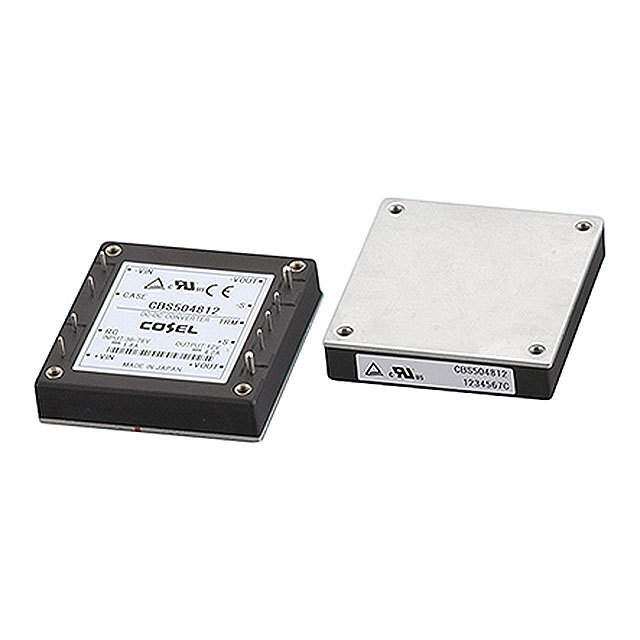- 型号: DCV010505DP
- 制造商: Texas Instruments
- 库位|库存: xxxx|xxxx
- 要求:
| 数量阶梯 | 香港交货 | 国内含税 |
| +xxxx | $xxxx | ¥xxxx |
查看当月历史价格
查看今年历史价格
DCV010505DP产品简介:
ICGOO电子元器件商城为您提供DCV010505DP由Texas Instruments设计生产,在icgoo商城现货销售,并且可以通过原厂、代理商等渠道进行代购。 DCV010505DP价格参考¥52.09-¥86.88。Texas InstrumentsDCV010505DP封装/规格:直流转换器, 隔离模块 DC/DC 转换器 2 输出 5V -5V 100mA,100mA 4.5V - 5.5V 输入。您可以下载DCV010505DP参考资料、Datasheet数据手册功能说明书,资料中有DCV010505DP 详细功能的应用电路图电压和使用方法及教程。
Texas Instruments 的 DCV010505DP 是一款直流转换器模块,属于 DC/DC 转换器类别。该器件主要功能是实现直流电压的电气隔离和电压转换,常用于需要电压匹配和隔离保护的电源系统中。 应用场景包括: 1. 工业自动化系统:用于为工业设备中的传感器、PLC 和控制电路提供隔离电源,提高系统的稳定性和安全性。 2. 通信设备:在通信基站、交换设备中用于电源隔离和转换,确保不同电压系统之间稳定供电。 3. 测试与测量仪器:为精密仪器提供稳定隔离电源,防止干扰和损坏。 4. 医疗设备:在需要电气隔离以满足安全标准的医疗电子设备中使用,如监护仪、诊断设备等。 5. 交通运输系统:用于列车、地铁等交通工具的电子控制系统中,提供可靠的电压转换与隔离。 6. 能源管理系统:在太阳能逆变器、储能系统中用于不同电压层级之间的转换与隔离。 DCV010505DP 具有高隔离电压、小体积、高效率等特点,适合对空间和可靠性要求较高的应用场景。
| 参数 | 数值 |
| 产品目录 | |
| 描述 | IC REG ISO FIX/ADJ 0.1A DL 7DIP隔离式DC/DC转换器 Mini 1W 1500Vrms Isolate DC/DC Cnvrtr |
| 产品分类 | DC DC ConvertersDC/DC转换器 |
| 品牌 | Texas Instruments |
| 产品手册 | |
| 产品图片 |
|
| rohs | 符合RoHS无铅 / 符合限制有害物质指令(RoHS)规范要求 |
| 产品系列 | 隔离式DC/DC转换器,Texas Instruments DCV010505DPDCV01 |
| 数据手册 | |
| 产品型号 | DCV010505DP |
| 产品 | Isolated |
| 产品目录页面 | |
| 产品种类 | 隔离式DC/DC转换器 |
| 其它名称 | 296-13450-5 |
| 制造商产品页 | http://www.ti.com/general/docs/suppproductinfo.tsp?distId=10&orderablePartNumber=DCV010505DP |
| 功率(W)-制造系列 | 1W |
| 功率(W)-最大值 | 1W |
| 包装 | 管件 |
| 商标 | Texas Instruments |
| 大小/尺寸 | 0.78" 长 x 0.33" 宽 x 0.21" 高 (19.7mm x 8.3mm x 5.3mm) |
| 安装类型 | 通孔 |
| 安装风格 | SMD/SMT |
| 封装 | Tube |
| 封装/外壳 | 14-DIP(0.300",7.62mm),7 引线 |
| 封装/箱体尺寸 | PDIP-7 |
| 工作温度 | -40°C ~ 85°C |
| 工作温度范围 | - 40 C to + 85 C |
| 工厂包装数量 | 25 |
| 效率 | 80% |
| 标准包装 | 25 |
| 特性 | OTP,SCP |
| 电压-输入(最大值) | 5.5V |
| 电压-输入(最小值) | 4.5V |
| 电压-输出1 | 5V |
| 电压-输出2 | -5V |
| 电压-输出3 | - |
| 电压-隔离 | 1.5kV(1500V) |
| 电流-输出(最大值) | 100mA,100mA |
| 类型 | 隔离模块 |
| 系列 | DCV010505D |
| 输入电压范围 | 4.5 V to 5.5 V |
| 输出功率 | 1 W |
| 输出数 | 2 |
| 输出电压—通道2 | - 4.75 V to - 5.25 V |
| 输出电流—通道1 | 100 mA |
| 输出电流—通道2 | 100 mA |
| 输出端数量 | 2 |

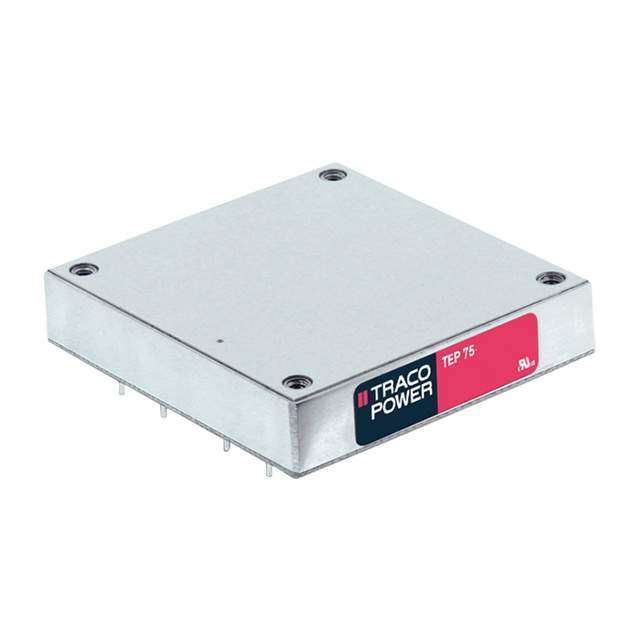
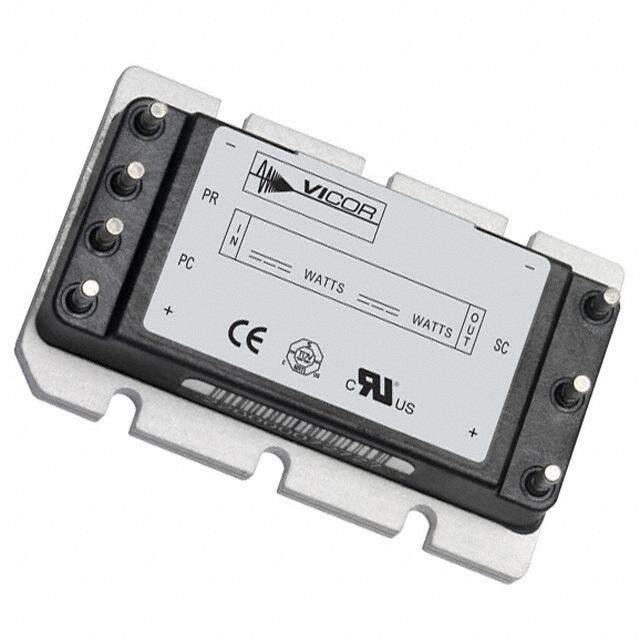
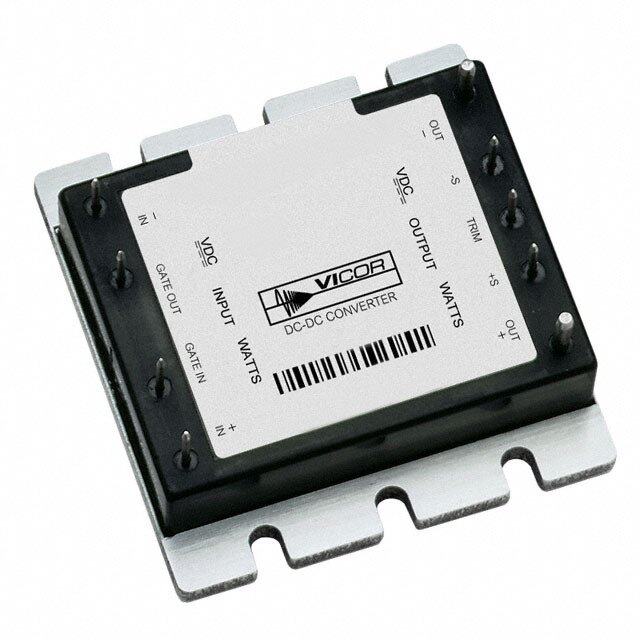
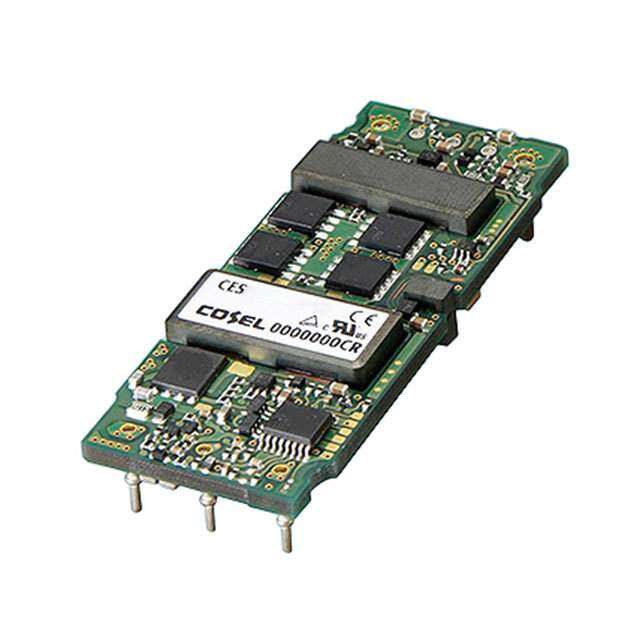


- 商务部:美国ITC正式对集成电路等产品启动337调查
- 曝三星4nm工艺存在良率问题 高通将骁龙8 Gen1或转产台积电
- 太阳诱电将投资9.5亿元在常州建新厂生产MLCC 预计2023年完工
- 英特尔发布欧洲新工厂建设计划 深化IDM 2.0 战略
- 台积电先进制程称霸业界 有大客户加持明年业绩稳了
- 达到5530亿美元!SIA预计今年全球半导体销售额将创下新高
- 英特尔拟将自动驾驶子公司Mobileye上市 估值或超500亿美元
- 三星加码芯片和SET,合并消费电子和移动部门,撤换高东真等 CEO
- 三星电子宣布重大人事变动 还合并消费电子和移动部门
- 海关总署:前11个月进口集成电路产品价值2.52万亿元 增长14.8%


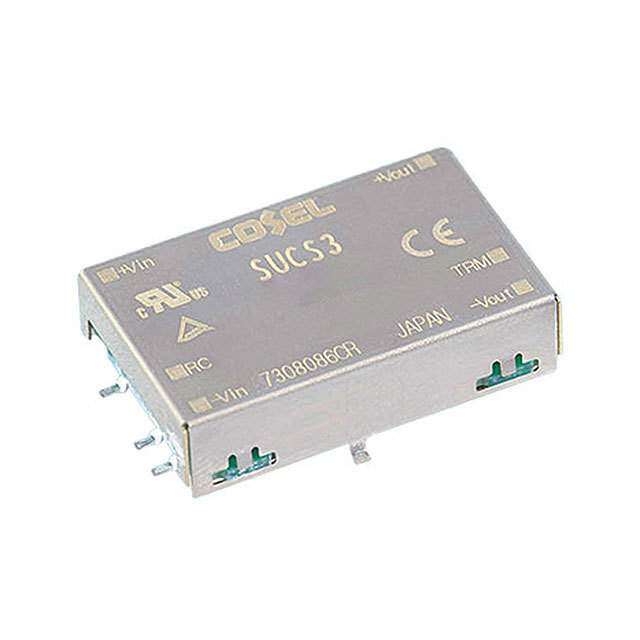
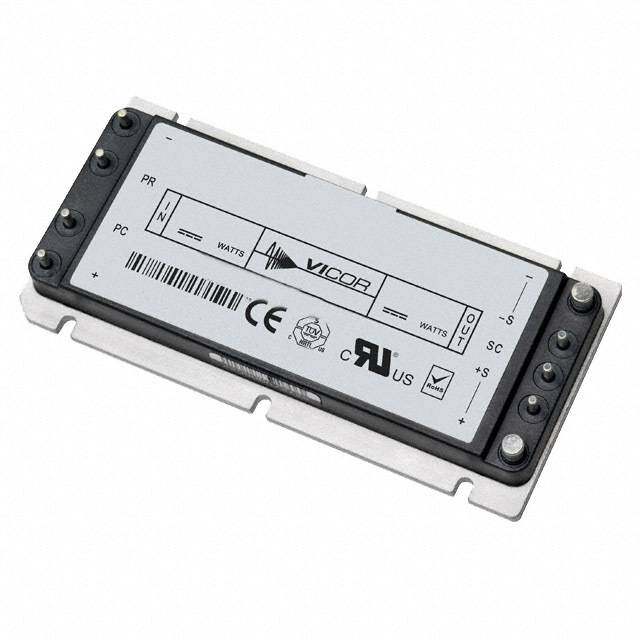


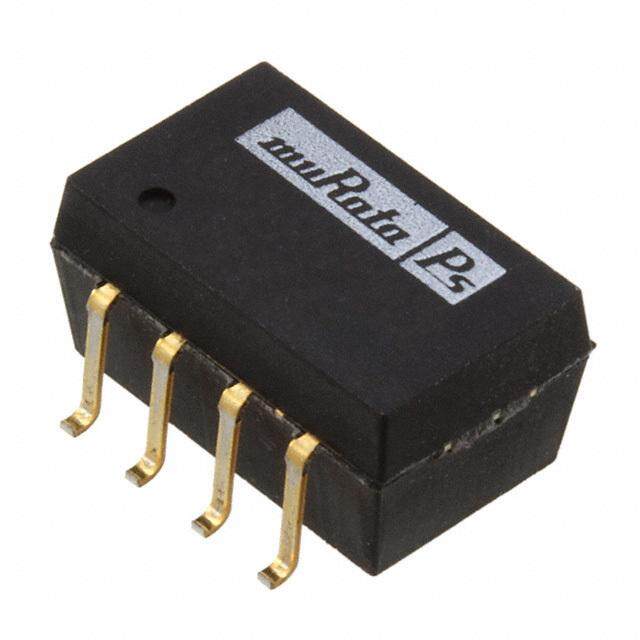
PDF Datasheet 数据手册内容提取
Product Sample & Technical Tools & Support & Folder Buy Documents Software Community DCV010505,DCV010505D,DCV010512,DCV010512D,DCV010515 DCV010515D,DCV011512D,DCV011515D,DCV012405,DCV012415D SBVS014B–AUGUST2000–REVISEDSEPTEMBER2016 DCV01 Series 1-W, 1500-Vrms Isolated, Unregulated DC/DC Converter Modules 1 Features 3 Description • 1.5-kVrmsIsolation(Operational) The DCV01 series is a family of 1-W, 1500-Vrms 1 isolated, unregulated DC/DC converter modules. • UL1950RecognizedComponent Requiring a minimum of external components and • EN55022ClassBEMCPerformance including on-chip device protection, the DCV01 series • 7-PinPDIPand7-PinSOPPackages of devices provide extra features such as output disableandsynchronizationofswitchingfrequencies. • Device-to-DeviceSynchronization • ThermalProtection This combination of features and small size makes theDCV01seriesofdevicessuitableforawiderange • Short-CircuitProtected of applications, and is an easy-to-use solution in • 5-V,15-V,and24-VInputs applicationsrequiringsignalpathisolation. • ±5-V, ±12-V,and ±15-VOutputs • HighEfficiency CAUTION 2 Applications This product has operational isolation and is • SignalPathIsolation intended for signal isolation • GroundLoopElimination only. It must not be used as a part of a safety • DataAcquisition isolation circuit requiring • IndustrialControlandInstrumentation reinforced isolation. See • TestEquipment definitions in Feature Description. DeviceInformation(1) PARTNUMBER PACKAGE BODYSIZE(NOM) PDIP(7) 19.18mm×10.60mm DCV01xxxx SOP(7) 19.18mm×10.60mm (1) For all available packages, see the orderable addendum at theendofthedatasheet. SingleOutputBlockDiagram DualOutputBlockDiagram SYNCOUT SYNCOUT SYNCIN O8s0c0i lklaHtozr DivRidees-ebty-2 +VOUT SYNCIN O8s0c0i lklaHtozr DivRidees-ebty-2 +VOUT Power Watchdog Stage –VOUT Watchdog PSotawgeer –VOUT Startup Startup COM Thermal PSU Thermal Shutdown Shutdown +VS Power Controller +VS Power Controller –VS Copyright © 2016, Texas Instruments Incorporated –VS Copyright © 2016, Texas Instruments Incorporated 1 An IMPORTANT NOTICE at the end of this data sheet addresses availability, warranty, changes, use in safety-critical applications, intellectualpropertymattersandotherimportantdisclaimers.PRODUCTIONDATA.
DCV010505,DCV010505D,DCV010512,DCV010512D,DCV010515 DCV010515D,DCV011512D,DCV011515D,DCV012405,DCV012415D SBVS014B–AUGUST2000–REVISEDSEPTEMBER2016 www.ti.com Table of Contents 1 Features.................................................................. 1 8.4 DeviceFunctionalModes........................................14 2 Applications........................................................... 1 9 ApplicationandImplementation........................ 16 3 Description............................................................. 1 9.1 ApplicationInformation............................................16 4 RevisionHistory..................................................... 2 9.2 TypicalApplication .................................................16 5 DeviceComparisonTable..................................... 3 10 PowerSupplyRecommendations..................... 19 6 PinConfigurationandFunctions......................... 4 11 Layout................................................................... 20 11.1 LayoutGuidelines.................................................20 7 Specifications......................................................... 5 11.2 LayoutExample....................................................20 7.1 AbsoluteMaximumRatings......................................5 12 DeviceandDocumentationSupport................. 22 7.2 ESDRatings ............................................................5 7.3 RecommendedOperatingConditions.......................5 12.1 DeviceSupport ....................................................22 7.4 ThermalInformation..................................................5 12.2 DocumentationSupport .......................................22 7.5 ElectricalCharacteristics...........................................6 12.3 RelatedLinks........................................................22 7.6 SwitchingCharacteristics..........................................6 12.4 ReceivingNotificationofDocumentationUpdates22 7.7 TypicalCharacteristics..............................................7 12.5 CommunityResources..........................................23 12.6 Trademarks...........................................................23 8 DetailedDescription............................................ 11 12.7 ElectrostaticDischargeCaution............................23 8.1 Overview.................................................................11 12.8 Glossary................................................................23 8.2 FunctionalBlockDiagrams.....................................11 13 Mechanical,Packaging,andOrderable 8.3 FeatureDescription.................................................12 Information........................................................... 23 4 Revision History ChangesfromRevisionA(December2013)toRevisionB Page • ChangedFeatures.................................................................................................................................................................. 1 • ChangedApplications............................................................................................................................................................. 1 • AddedDeviceInformationtable,DeviceComparisontable,ESDRatingstable,FeatureDescriptionsection,Device FunctionalModes,ApplicationandImplementationsection,PowerSupplyRecommendationssection,Layout section,DeviceandDocumentationSupportsection,andMechanical,Packaging,andOrderableInformationsection......1 • DeletedElectricalCharacteristicsPerDevicetable............................................................................................................... 6 • AddedadditionalgraphstoTypicalCharacteristicssection................................................................................................... 7 • AddedIsolationsubsectiontoFeatureDescriptionsection.................................................................................................. 12 • DeletedDCH,DCP,DCR,andDCVSeriesDC-DCConverterssubsection....................................................................... 12 • DeletedContinuousVoltagesubsection............................................................................................................................... 12 • DeletedreferencestoDCP,DCR,DCR,andDCHseries................................................................................................... 12 • AddedtypicalapplicationdesigntoApplicationInformationsection.................................................................................... 16 2 SubmitDocumentationFeedback Copyright©2000–2016,TexasInstrumentsIncorporated ProductFolderLinks:DCV010505 DCV010505D DCV010512 DCV010512D DCV010515DCV010515D DCV011512D DCV011515D DCV012405 DCV012415D
DCV010505,DCV010505D,DCV010512,DCV010512D,DCV010515 DCV010515D,DCV011512D,DCV011515D,DCV012405,DCV012415D www.ti.com SBVS014B–AUGUST2000–REVISEDSEPTEMBER2016 5 Device Comparison Table atT =25°C,+V =nominal,C =2.2µF,andC =0.1µF(unlessotherwisenoted) A S IN OUT OUTPUT DEVICE LOAD NOLOAD BARRIER INPUT EFFICIENCY VOLTAGE OUTPUT REGULATION CURRENT CAPACITANCE NDUEMVBICEER VOVLST(AVG)E VNOM7a5t%VSLO(TAYDP)(V) CU(mRAR)E(1N)T 10%LOTAOD1(20)0% 0%IQ(LmOAA)D 100%(%L)OAD VISOC=IS7O5(0pFV)rms MIN TYP MAX MIN TYP MAX MAX TYP MAX TYP TYP TYP DCV010505P 4.5 5 5.5 4.75 5 5.25 200 19 31 20 80 3.6 DCV010505P-U DCV010505DP 4.5 5 5.5 ±4.25 ±5 ±5.75 200(3) 18 32 22 81 3.8 DCV010505DP-U DCV010512P 4.5 5 5.5 11.4 12 12.6 83 21 38 29 85 5.1 DCV010512P-U DCV010512DP 4.5 5 5.5 ±11.4 ±12 ±12.6 83(3) 19 37 40 82 4 DCV010512DP-U DCV010515P 4.5 5 5.5 14.25 15 15.75 66 26 42 34 82 3.8 DCV010515P-U DCV010515DP 4.5 5 5.5 ±14.25 ±15 ±15.75 66(3) 19 41 42 85 4.7 DCV010515DP-U DCV011512DP 13.5 15 16.5 ±11.4 ±12 ±12.6 83(3) 11 39 19 78 2.5 DCV011512DP-U DCV011515DP 13.5 15 16.5 ±14.25 ±15 ±15.75 66(3) 12 39 20 80 2.5 DCV011515DP-U DCV012405P 21.6 24 26.4 4.75 5 5.25 200 13 23 14 77 2.5 DCV012405P-U DCV012415DP 21.6 24 26.4 ±14.25 ±15 ±15.75 66(3) 10 35 17 76 3.8 DCV012415DP-U (1) P =1W OUT(max) (2) Loadregulation=(V at10%load–V at100%)/V at75%load OUT OUT OUT (3) I +I OUT1 OUT2 Copyright©2000–2016,TexasInstrumentsIncorporated SubmitDocumentationFeedback 3 ProductFolderLinks:DCV010505 DCV010505D DCV010512 DCV010512D DCV010515DCV010515D DCV011512D DCV011515D DCV012405 DCV012415D
DCV010505,DCV010505D,DCV010512,DCV010512D,DCV010515 DCV010515D,DCV011512D,DCV011515D,DCV012405,DCV012415D SBVS014B–AUGUST2000–REVISEDSEPTEMBER2016 www.ti.com 6 Pin Configuration and Functions NVA,DUAPackage 7-PinPDIP,SOP(Single-Output) NVA,DUAPackage (TopView) 7-PinPDIP,SOP(Dual-Output) (TopView) +VS 1 14 SYNCIN +VS 1 14 SYNCIN –VS 2 –VS 2 DCV01 DCV01 –VOUT 5 COM 5 +VOUT 6 +VOUT 6 NC 7 8 SYNCOUT –VOUT 7 8 SYNCOUT PinFunctions PIN I/O DESCRIPTION NAME SINGLE-OUTPUT DUAL-OUTPUT COM — 5 O Outputsidecommon NC 7 — — Noconnection Synchronization.Synchronizemultipledevicesby SYNC 14 14 I connectingtheSYNCpinsofeach.Pullingthispinlow IN disablestheinternaloscillator. SYNC 8 8 O Synchronizationoutput.Unrectifiedtransformeroutput. OUT +V 6 6 O Positiveoutputvoltage OUT +V 1 1 I Inputvoltage S –V 5 7 O Negativeoutputvoltage OUT –V 2 2 I Inputsidecommon S 4 SubmitDocumentationFeedback Copyright©2000–2016,TexasInstrumentsIncorporated ProductFolderLinks:DCV010505 DCV010505D DCV010512 DCV010512D DCV010515DCV010515D DCV011512D DCV011515D DCV012405 DCV012415D
DCV010505,DCV010505D,DCV010512,DCV010512D,DCV010515 DCV010515D,DCV011512D,DCV011515D,DCV012405,DCV012415D www.ti.com SBVS014B–AUGUST2000–REVISEDSEPTEMBER2016 7 Specifications 7.1 Absolute Maximum Ratings overoperatingfree-airtemperaturerange(unlessotherwisenoted)(1) MIN MAX UNIT 5-Vinputdevices 7 Inputvoltage 15-Vinputdevices 18 V 24-Vinputdevices 29 Surfacetemperatureofdevicebodyorpins Leadtemperature PDIPpackage 270 °C (maximum10s) Reflowsoldertemperature SOPpackage Surfacetemperatureofdevicebodyorpins 260 °C Storagetemperature,T –60 125 °C stg (1) StressesbeyondthoselistedunderAbsoluteMaximumRatingsmaycausepermanentdamagetothedevice.Thesearestressratings only,whichdonotimplyfunctionaloperationofthedeviceattheseoranyotherconditionsbeyondthoseindicatedunderRecommended OperatingConditions.Exposuretoabsolute-maximum-ratedconditionsforextendedperiodsmayaffectdevicereliability. 7.2 ESD Ratings VALUE UNIT Human-bodymodel(HBM),perANSI/ESDA/JEDECJS-001(1) ±1000 V Electrostaticdischarge V (ESD) Charged-devicemodel(CDM),perJEDECspecificationJESD22-C101(2) ±250 (1) JEDECdocumentJEP155statesthat500-VHBMallowssafemanufacturingwithastandardESDcontrolprocess. (2) JEDECdocumentJEP157statesthat250-VCDMallowssafemanufacturingwithastandardESDcontrolprocess. 7.3 Recommended Operating Conditions overoperatingfree-airtemperaturerange(unlessotherwisenoted) MIN NOM MAX UNIT 5-Vinputdevices 4.5 5 5.5 Inputvoltage 15-Vinputdevices 13.5 15 16.5 V 24-Vinputdevices 21.6 24 26.4 Operatingtemperature –40 85 °C 7.4 Thermal Information DCV01 DCV01 THERMALMETRIC(1) NVA(PDIP) DVB(SOP) UNIT 7PINS 12PINS R Junction-to-ambientthermalresistance 61 61 °C/W θJA R Junction-to-case(top)thermalresistance 26 26 °C/W θJC(top) R Junction-to-boardthermalresistance 24 24 °C/W θJB ψ Junction-to-topcharacterizationparameter 7 7 °C/W JT ψ Junction-to-boardcharacterizationparameter 24 24 °C/W JB R Junction-to-case(bottom)thermalresistance — — °C/W θJC(bot) (1) Formoreinformationabouttraditionalandnewthermalmetrics,seetheSemiconductorandICPackageThermalMetricsapplication report. Copyright©2000–2016,TexasInstrumentsIncorporated SubmitDocumentationFeedback 5 ProductFolderLinks:DCV010505 DCV010505D DCV010512 DCV010512D DCV010515DCV010515D DCV011512D DCV011515D DCV012405 DCV012415D
DCV010505,DCV010505D,DCV010512,DCV010512D,DCV010515 DCV010515D,DCV011512D,DCV011515D,DCV012405,DCV012415D SBVS014B–AUGUST2000–REVISEDSEPTEMBER2016 www.ti.com 7.5 Electrical Characteristics atT =25°C,+V =nominal,C =2.2µF,C =1µF(unlessotherwisenoted) A S IN OUT PARAMETER TESTCONDITIONS MIN TYP MAX UNIT OUTPUT P Outputpower I =100%(fullload) 0.97 W OUT LOAD V Outputvoltageripple C =1µF,I =50% 20 mV RIPPLE OUT LOAD PP –40°C≤T ≤25°C 0.046% °C A Voltagevstemperature 25°C≤T ≤85°C 0.016% °C A INPUT V Inputvoltage –10% 10% S ISOLATION Voltage 1.5 kVrms 1-secondflashtest dV/dt 500 V/s V Isolation Leakagecurrent 30 nA ISO Continuousworking DC 60 VDC voltageacross isolationbarrier AC 42.5 VAC LINEREGULATION I ≥10%loadcurrentandconstant, OUT 1% 15% V (min)toV (typ) S S Outputvoltage I ≥10%loadcurrentandconstant, OUT 1% 15% V (typ)toV (max) S S RELIABILITY Demonstrated T =55°C 75 FITS A THERMALSHUTDOWN T Dietemperatureatshutdown 150 °C SD I Shutdowncurrent 3 mA SD 7.6 Switching Characteristics atT =25°C,+V =nominal,C =2.2µF,C =1µF(unlessotherwisenoted) A S IN OUT PARAMETER TESTCONDITIONS MIN TYP MAX UNIT f Oscillatorfrequency f =f /2 800 kHz OSC SW OSC V Low-levelinputvoltage,SYNC 0 0.4 V IL I Inputcurrent,SYNC V =2V 75 µA SYNC SYNC t Disabletime 2 µs DISABLE C CapacitanceloadingonSYNCpin(1) External 3 pF SYNC (1) ExternalSynchronizationoftheDCP01/02SeriesofDC/DCConvertersdescribesthisconfiguration. 6 SubmitDocumentationFeedback Copyright©2000–2016,TexasInstrumentsIncorporated ProductFolderLinks:DCV010505 DCV010505D DCV010512 DCV010512D DCV010515DCV010515D DCV011512D DCV011515D DCV012405 DCV012415D
DCV010505,DCV010505D,DCV010512,DCV010512D,DCV010515 DCV010515D,DCV011512D,DCV011515D,DCV012405,DCV012415D www.ti.com SBVS014B–AUGUST2000–REVISEDSEPTEMBER2016 7.7 Typical Characteristics atT =25°C(unlessotherwisenoted) A 50 5.5 45 1-mF Ceramic 5.4 40 4.7-mF Ceramic 5.3 10-mF Ceramic 5.2 V)PP 3350 ge (V) 5.1 m a 5.0 Ripple ( 221505 Output Volt 44..98 4.7 10 4.6 5 4.5 0 4.4 10 20 30 40 50 60 70 80 90 100 4.5 4.6 4.7 4.8 4.9 5.0 5.1 5.2 5.3 5.4 5.5 Load (%) Input Voltage (V) DCV010505 20-MHzBW DCV010505 Figure1.OutputRipplevsLoad Figure2.LineRegulation 5.8 85 5.7 80 5.6 5.5 V) 75 e ( 5.4 %) ag 5.3 y ( olt nc 70 utput V 55..21 Efficie 65 O 5.0 4.9 60 4.8 4.7 55 10 20 30 40 50 60 70 80 90 100 10 20 30 40 50 60 70 80 90 100 Load (%) Load (%) DCV010505 DCV010505 Figure3.LoadRegulation Figure4.EfficiencyvsLoad 60 60 Standard Limits Standard Limits 50 Class A 50 Class A A) Class B A) Class B Bµ 40 Bµ 40 d d ak ( 30 ak ( 30 e e P P el, 20 el, 20 v v e e n L 10 n L 10 o o si si mis 0 mis 0 E E 10 –10 20 –20 0.15 1 10 30 0.15 1 10 30 Frequency(MHz) Frequency(MHz) DCV010505 125%Load DCV010505 8%Load Figure5. ConductedEmissions Figure6.ConductedEmissions Copyright©2000–2016,TexasInstrumentsIncorporated SubmitDocumentationFeedback 7 ProductFolderLinks:DCV010505 DCV010505D DCV010512 DCV010512D DCV010515DCV010515D DCV011512D DCV011515D DCV012405 DCV012415D
DCV010505,DCV010505D,DCV010512,DCV010512D,DCV010515 DCV010515D,DCV011512D,DCV011515D,DCV012405,DCV012415D SBVS014B–AUGUST2000–REVISEDSEPTEMBER2016 www.ti.com Typical Characteristics (continued) atT =25°C(unlessotherwisenoted) A 5.8 85 5.7 +VOUT 5.6 –VOUT 80 5.5 V) 75 e ( 5.4 %) Voltag 55..32 ency ( 70 utput 5.1 Effici 65 O 5.0 4.9 60 4.8 4.7 55 10 20 30 40 50 60 70 80 90 100 10 20 30 40 50 60 70 80 90 100 Load (%) Load (%) DCV010505D DCV010505D Figure7.LoadRegulation Figure8.EfficiencyvsLoad 14.5 90 14.0 85 80 13.5 V) e ( %) 75 Voltag 13.0 ency ( 70 utput 12.5 Effici 65 O 12.0 60 11.5 55 11.0 50 10 20 30 40 50 60 70 80 90 100 10 20 30 40 50 60 70 80 90 100 Load (%) Load (%) DCV010512 DCV010512 Figure9.LoadRegulation Figure10.EfficiencyvsLoad 14.5 85 14.0 80 13.5 75 13.0 %) (V) 12.5 cy ( 70 VOUT 1121..05 Efficien 65 60 11.0 10.5 +-VVOUT 55 OUT 10.00 50 10 20 30 40 50 60 70 80 90 100 10 20 30 40 50 60 70 80 90 100 Load (%) Load (%) DCV010512D DCV010512D Figure11.LoadRegulation Figure12.EfficiencyvsLoad 8 SubmitDocumentationFeedback Copyright©2000–2016,TexasInstrumentsIncorporated ProductFolderLinks:DCV010505 DCV010505D DCV010512 DCV010512D DCV010515DCV010515D DCV011512D DCV011515D DCV012405 DCV012415D
DCV010505,DCV010505D,DCV010512,DCV010512D,DCV010515 DCV010515D,DCV011512D,DCV011515D,DCV012405,DCV012415D www.ti.com SBVS014B–AUGUST2000–REVISEDSEPTEMBER2016 Typical Characteristics (continued) atT =25°C(unlessotherwisenoted) A 17.5 85 17.0 80 V) 16.5 75 e ( %) utput Voltag 1165..05 Efficiency ( 7605 O 15.0 60 14.5 55 14.0 50 10 20 30 40 50 60 70 80 90 100 10 20 30 40 50 60 70 80 90 100 Load (%) Load (%) DCV010515 DCV010515 Figure13.LoadRegulation Figure14.LoadRegulation 18 90 85 17 80 %) 75 V(V)OUT 16 Efficiency ( 7605 15 60 +V OUT 55 -V OUT 14 50 10 20 30 40 50 60 70 80 90 100 10 20 30 40 50 60 70 80 90 100 Load (%) Load (%) DCV010515D DCV010515D Figure15.LoadRegulation Figure16.EfficiencyvsLoad 5.60 90 5.50 80 70 5.40 5.30 %) 60 V(V)OUT 55..2100 Efficiency ( 543000 5.00 20 4.90 10 4.80 0 10 20 30 40 50 60 70 80 100 10 20 30 40 50 60 70 80 90 100 Load (%) Load (%) DCV012405 DCV012405 Figure17.LoadRegulation Figure18.EfficiencyvsLoad Copyright©2000–2016,TexasInstrumentsIncorporated SubmitDocumentationFeedback 9 ProductFolderLinks:DCV010505 DCV010505D DCV010512 DCV010512D DCV010515DCV010515D DCV011512D DCV011515D DCV012405 DCV012415D
DCV010505,DCV010505D,DCV010512,DCV010512D,DCV010515 DCV010515D,DCV011512D,DCV011515D,DCV012405,DCV012415D SBVS014B–AUGUST2000–REVISEDSEPTEMBER2016 www.ti.com Typical Characteristics (continued) atT =25°C(unlessotherwisenoted) A 13.5 80 +VOUT –VOUT 75 13.0 70 Voltage (V) 1122..50 ency (%) 665055 utput 11.5 Effici 50 O 45 40 11.0 35 10.5 30 10 20 30 40 50 60 70 80 90 100 10 20 30 40 50 60 70 80 90 100 Load (%) Load (%) DCV011512D DCV011512D Figure19.LoadRegulation Figure20.EfficiencyvsLoad 17 90 +VOUT 16.5 –VOUT 80 16 V) 70 e ( 15.5 %) oltag 15 ncy ( 60 V e utput 14.5 Effici 50 O 14 40 13.5 13 30 10 20 30 40 50 60 70 80 90 100 10 20 30 40 50 60 70 80 90 100 Load (%) Load (%) DCV011515D DCV011515D Figure21.LoadRegulation Figure22.EfficiencyvsLoad 16.5 90 +VOUT 16 –VOUT 80 V) 15.5 70 e ( %) Voltag 15 ency ( 60 utput 14.5 Effici 50 O 40 14 30 13.5 20 10 20 30 40 50 60 70 80 90 100 10 20 30 40 50 60 70 80 90 100 Load (%) Load (%) DCV012415D DCV012415D Figure23.LoadRegulation Figure24.EfficiencyvsLoad 10 SubmitDocumentationFeedback Copyright©2000–2016,TexasInstrumentsIncorporated ProductFolderLinks:DCV010505 DCV010505D DCV010512 DCV010512D DCV010515DCV010515D DCV011512D DCV011515D DCV012405 DCV012415D
DCV010505,DCV010505D,DCV010512,DCV010512D,DCV010515 DCV010515D,DCV011512D,DCV011515D,DCV012405,DCV012415D www.ti.com SBVS014B–AUGUST2000–REVISEDSEPTEMBER2016 8 Detailed Description 8.1 Overview The DCV01 offers up to 1 W of isolated, unregulated output power from a 5-V, 15-V, or 24-V input source with a typical efficiency of up to 86%. This efficiency is achieved through highly integrated packaging technology and the implementation of a custom power stage and control device. The DCV01 devices are specified for operationalisolationonly.ThecircuitdesignusesanadvancedBiCMOSandDMOSprocess. 8.2 Functional Block Diagrams SYNCOUT Oscillator Divide-by-2 SYNCIN 800 kHz Reset +VOUT Power Watchdog Stage –VOUT Startup Thermal Shutdown +VS Power Controller –VS Copyright © 2016, Texas Instruments Incorporated Figure25. SingleOutputDevice SYNCOUT SYNCIN O8s0c0i lklaHtozr DivRidees-ebty-2 +VOUT Watchdog PSotawgeer –VOUT Startup COM PSU Thermal Shutdown +VS Power Controller –VS Copyright © 2016, Texas Instruments Incorporated Figure26. DualOutputDevice Copyright©2000–2016,TexasInstrumentsIncorporated SubmitDocumentationFeedback 11 ProductFolderLinks:DCV010505 DCV010505D DCV010512 DCV010512D DCV010515DCV010515D DCV011512D DCV011515D DCV012405 DCV012415D
DCV010505,DCV010505D,DCV010512,DCV010512D,DCV010515 DCV010515D,DCV011512D,DCV011515D,DCV012405,DCV012415D SBVS014B–AUGUST2000–REVISEDSEPTEMBER2016 www.ti.com 8.3 Feature Description 8.3.1 Isolation UnderwritersLaboratories,UL™definesseveralclassesofisolationthatareusedinmodernpowersupplies. Safety extra low voltage (SELV) is defined by UL (UL1950 E199929) as a secondary circuit which is so designated and protected that under normal and single fault conditions the voltage between any two accessible parts, or between an accessible part and the equipment earthing terminal for operational isolation does not exceedsteadystate42.4V or60V peak. RMS DC 8.3.1.1 OperationorFunctionalIsolation The type of isolation used in the DCV01 products is referred to as operational or functional isolation. Insulated wire used in the construction of the transformer acts as the primary isolation barrier. A high-potential (hipot), one- second duration test (dielectric voltage, withstand test) is a production test used to verify that the isolation barrier isfunctioning.Productswithoperationalisolationmustneverbeusedasanelementinasafety-isolationsystem. 8.3.1.2 BasicorEnhancedIsolation Basic or enhanced isolation is defined by specified creepage and clearance limits between the primary and secondarycircuitsofthepowersupply.Basicisolationistheuseofanisolationbarrierinadditiontotheinsulated wire in the construction of the transformer. Input and output circuits must also be physically separated by specifieddistances. NOTE TheDCV01productsdonotprovidebasicorenhancedisolation. 8.3.1.3 WorkingVoltage For a device with operational isolation, the continuous working voltage that can be applied across the device in normaloperationmustbelessthan42.4V or60V (SELVlimits). RMS DC WARNING Do not use the device as an element of a safety isolation system if SELV is exceeded. Ifthedeviceisexpectedtofunctioncorrectlywithmorethan42.4V or60V appliedcontinuouslyacrossthe RMS DC isolation barrier, then the circuitry on both sides of the barrier must be regarded as operating at an unsafe voltage, and further isolation or insulation systems must form a barrier between these circuits and any user- accessiblecircuitryaccordingtosafetystandardrequirements. 8.3.1.4 IsolationVoltageRating The terms Hipot test,flash-tested,withstand voltage,proof voltage, dielectric withstand voltage, and isolation test voltage all relate to the same thing. These terms describe a test voltage that is applied across a component for a specified time, to verify the integrity of the isolation barrier of the component. TI’s DCV01 series of dc-dc convertersareall100%productiontestedat1.5kV foronesecond. rms 8.3.1.5 RepeatedHigh-VoltageIsolationTesting Repeatedhigh-voltageisolationtestingofabarriercomponentcandegradetheisolationcapability,dependingon materials, construction, and environment. The DCV01 series of dc-dc converters have toroidal, enameled, wire isolation transformers with no additional insulation between the primary and secondary windings. While a device can be expected to withstand several times the stated test voltage, the isolation capability depends on the wire insulation. Any material, including this enamel (typically polyurethane), is susceptible to eventual chemical degradation when subject to very-high applied voltages. Therefore, strictly limit the number of high-voltage tests and repeated high-voltage isolation testing. However, if it is absolutely required, reduce the voltage by 20% from specifiedtestvoltagewithadurationlimitofonesecondpertest. 12 SubmitDocumentationFeedback Copyright©2000–2016,TexasInstrumentsIncorporated ProductFolderLinks:DCV010505 DCV010505D DCV010512 DCV010512D DCV010515DCV010515D DCV011512D DCV011515D DCV012405 DCV012415D
DCV010505,DCV010505D,DCV010512,DCV010512D,DCV010515 DCV010515D,DCV011512D,DCV011515D,DCV012405,DCV012415D www.ti.com SBVS014B–AUGUST2000–REVISEDSEPTEMBER2016 Feature Description (continued) 8.3.2 PowerStage The DCV01 series of devices use a push-pull, center-tapped topology. The DCV01 devices switch at 400 kHz (divide-by-2froman800-kHzoscillator). 8.3.3 OscillatorandWatchdogCircuit The onboard, 800-kHz oscillator generates the switching frequency via a divide-by-2 circuit. The oscillator can be synchronizedtootherDCV01devicecircuitsoranexternalsource,andisusedtominimizesystemnoise. A watchdog circuit monitors the operation of the oscillator circuit. The oscillator can be disabled by pulling the SYNC pin low. When the SYNC pin goes low, the output pins transition into tri-state mode, which occurs within 2µs. 8.3.4 ThermalShutdown TheDCV01seriesofdevicesareprotectedbyathermal-shutdowncircuit. If the on-chip temperature rises above 150°C, the device shuts down. Normal operation resumes as soon as the temperature falls below 150°C. While the over-temperature condition continues, operation randomly cycles on andoff.Thiscyclingcontinuesuntilthetemperatureisreduced. 8.3.5 Synchronization When more than one DC/DC converter is needed onboard, beat frequencies and other electrical interference can be generated. This interference occurs because of the small variations in switching frequencies between the DC/DCconverters. The DCV01 series of devices overcome this interference by allowing devices to be synchronized to one another. Synchronize up to eight devices by connecting the SYNC pins of each device, taking care to minimize the capacitance of tracking. Stray capacitance (greater than 3 pF) reduces the switching frequency, or can sometimesstoptheoscillatorcircuit.ThemaximumrecommendedvoltageappliedtotheSYNCpinis3V. For an application that uses more than eight synchronized devices use an external device to drive the SYNC pins. External Synchronization of the DCP01/02 Series of DC/DC Converters (SBAA035) describes this configuration. NOTE During the start-up period, all synchronized devices draw maximum current from the input simultaneously. If the input voltage falls below approximately 4 V, the devices may not startup.Aceramiccapacitormustbeconnectedclosetotheinputpinofeachdevice.Use a 2.2-µF capacitor for 5-V and 15-V input devices, and a 0.47-µF capacitor for the 24-Vdevices. 8.3.6 Construction The basic construction of the DCV01 series of devices is the same as standard integrated circuits. The molded package contains no substrate. The DCV01 series of devices are constructed using an IC, rectifier diodes, and a wound magnetic toroid on a leadframe. Because the package contains no solder, the devices do not require any specialprintedcircuitboard(PCB)assemblyprocessing.ThisarchitectureresultsinanisolatedDC/DCconverter withinherentlyhighreliability. 8.3.7 ThermalManagement Due to the high power density of this device, it is advisable to provide ground planes on the input and output rails. Copyright©2000–2016,TexasInstrumentsIncorporated SubmitDocumentationFeedback 13 ProductFolderLinks:DCV010505 DCV010505D DCV010512 DCV010512D DCV010515DCV010515D DCV011512D DCV011515D DCV012405 DCV012415D
DCV010505,DCV010505D,DCV010512,DCV010512D,DCV010515 DCV010515D,DCV011512D,DCV011515D,DCV012405,DCV012415D SBVS014B–AUGUST2000–REVISEDSEPTEMBER2016 www.ti.com 8.4 Device Functional Modes 8.4.1 DisableandEnable(SYNC pin) IN Each of the DCV01 series devices can be disabled or enabled by driving the SYNC pin using an open-drain IN CMOS gate. If the SYNC pin is pulled low, the DCV01 becomes disabled. The disable time depends upon the IN external loading. The internal disable function is implemented in 2 µs. Removal of the pulldown causes the DCV01tobeenabled. Capacitive loading on the SYNC pin must be minimized (≤ 3 pF) in order to prevent a reduction in the oscillator IN frequency. External Synchronization of the DCP01/02 Series of DC/DC Converters (SBAA035) describes disable/enablecontrolcircuitry. 8.4.2 Decoupling 8.4.2.1 RippleReduction The high switching frequency of 400 kHz allows simple filtering. To reduce ripple, TI recommends that a minimum of 1-µF capacitor be used on the +V pin. For dual output devices, decouple both of the outputs to OUT the COM pin. The required 2.2-µF, low ESR ceramic input capacitor also helps to reduce ripple and noise, (24-V input voltage versions require only 0.47 µF of input capacitance). See DC-to-DC Converter Noise Reduction (SBVA012). 8.4.2.2 ConnectingtheDCV01inSeries Multiple DCV01 devices can be connected in series to provide non-standard voltage rails. This configuration is possiblebyusingthefloatingoutputsprovidedbythegalvanicisolationoftheDCV01. Connect the +V from one DCV01 to the –V of another (see Figure 27). If the SYNC pins are tied OUT OUT IN together, the self-synchronization feature of the DCV01 prevents beat frequencies on the voltage rails. The synchronization feature of the DCV01 allows easy series connection without external filtering, thus minimizing cost. VIN +VS +VOUT1 CIN COUT SYNCIN DCV 01 1.0 µF –VS –VOUT1 VOUT1 + VOUT2 VS +VOUT2 CIN COUT SYNCIN DCV 01 1.0 µF –VS –VOUT2 Figure27. MultipleDCV01DevicesConnectedinSeries The outputs of a dual-output DCV01 can also be connected in series to provide two times the magnitude of +V , as shown in Figure 28. For example, connect a dual-output, 15-V, DCP012415D device to provide a 30-V OUT rail. VIN +VS +VOUT +VOUT COUT CIN DCV 01 1.0 µF –VOUT –VOUT COUT –VS COM 1.0 µF Figure28. DualOutputDevicesConnectedinSeries 14 SubmitDocumentationFeedback Copyright©2000–2016,TexasInstrumentsIncorporated ProductFolderLinks:DCV010505 DCV010505D DCV010512 DCV010512D DCV010515DCV010515D DCV011512D DCV011515D DCV012405 DCV012415D
DCV010505,DCV010505D,DCV010512,DCV010512D,DCV010515 DCV010515D,DCV011512D,DCV011515D,DCV012405,DCV012415D www.ti.com SBVS014B–AUGUST2000–REVISEDSEPTEMBER2016 8.4.2.3 ConnectingtheDCV01inParallel If the output power from one DCV01 is not sufficient, it is possible to parallel the outputs of multiple DCV01s, as shown in Figure 29, (applies to single output devices only). The synchronization feature allows easy synchronizationtopreventpower-railbeatfrequenciesatnoadditionalfilteringcost. VIN +VS +VOUT1 SYNC DCV 01 COUT CIN IN 1.0 µF –VS –VOUT1 2 × Power Out +VS +VOUT2 DCV 01 COUT CIN SYNCIN 1.0 µF –VS –VOUT2 GND Figure29. MultipleDCV01DevicesConnectedinParallel Copyright©2000–2016,TexasInstrumentsIncorporated SubmitDocumentationFeedback 15 ProductFolderLinks:DCV010505 DCV010505D DCV010512 DCV010512D DCV010515DCV010515D DCV011512D DCV011515D DCV012405 DCV012415D
DCV010505,DCV010505D,DCV010512,DCV010512D,DCV010515 DCV010515D,DCV011512D,DCV011515D,DCV012405,DCV012415D SBVS014B–AUGUST2000–REVISEDSEPTEMBER2016 www.ti.com 9 Application and Implementation NOTE Information in the following applications sections is not part of the TI component specification, and TI does not warrant its accuracy or completeness. TI’s customers are responsible for determining suitability of components for their purposes. Customers should validateandtesttheirdesignimplementationtoconfirmsystemfunctionality. 9.1 Application Information TheDCV01devicesofferupto1Wofisolated,unregulatedoutputpowerfroma5-V,15-V,or24-Vinputsupply. Applications requiring up to 1.5-kVrms of operational isolation benefit from the small size and ease-of-use of the DCV01familyofdevices. 9.2 Typical Application VIN +VS +VOUT +VOUT CIN SYNC DCV01 COUT 2.2 µF 1.0 µF –VS –VOUT –VOUT Copyright © 2016, Texas Instruments Incorporated Figure30. DCV010505TypicalApplicationSchematic 9.2.1 DesignRequirements For this design example, use the parameters listed in Table 1 and follow the procedures in Detailed Design Procedure. Table1.DesignExampleParameters PARAMETER VALUE V Inputvoltage 5V (+VS) V Outputvoltage 5V (+VOUT) I Outputcurrentrating 200mA OUT f Operatingfrequency 400kHz SW 9.2.2 DetailedDesignProcedure 9.2.2.1 InputCapacitor For all 5-V and 15-V input voltage designs, select a 2.2-µF low-ESR ceramic input capacitor to ensure a good start-upperformance.24-Vinputapplicationsrequireonly0.47-µFofinputcapacitance. 9.2.2.2 OutputCapacitor ForanyDCV01design,selecta1-µFlow-ESRceramicoutputcapacitortoreduceoutputripple. 9.2.2.3 SYNC Pin IN Inastand-aloneapplication,leavetheSYNC pinfloating. IN 16 SubmitDocumentationFeedback Copyright©2000–2016,TexasInstrumentsIncorporated ProductFolderLinks:DCV010505 DCV010505D DCV010512 DCV010512D DCV010515DCV010515D DCV011512D DCV011515D DCV012405 DCV012415D
DCV010505,DCV010505D,DCV010512,DCV010512D,DCV010515 DCV010515D,DCV011512D,DCV011515D,DCV012405,DCV012415D www.ti.com SBVS014B–AUGUST2000–REVISEDSEPTEMBER2016 9.2.2.4 PCBDesign The copper losses (resistance and inductance) can be minimized by using wide ground and power traces or planes. If several devices are being powered from a common power source, a star-connected layout must be used. Device inputs must not be connected in series, as this will cascade the resistive losses. The position of the decoupling capacitors is important in order to reduce losses. Place the decoupling capacitors as close to the devicesaspossible.SeePCBLayoutformoredetails. 9.2.2.5 DecouplingCeramicCapacitors All capacitors have losses because of internal equivalent series resistance (ESR), and to a lesser degree, equivalent series inductance (ESL). Values for ESL are not always easy to obtain. However, some manufacturers provide graphs of frequency versus capacitor impedance. These graphs typically show the capacitor impedance falling as frequency is increased (as shown in Figure 31). In Figure 31, X is the reactance C due to the capacitance, X is the reactance due to the ESL, and f is the resonant frequency. As the frequency L 0 increases, the impedance stops decreasing and begins to rise. The point of minimum impedance indicates the resonant frequency of the capacitor. This frequency is where the components of capacitance and inductance reactanceareofequalmagnitude.Beyondthispoint,thecapacitorisnoteffectiveasacapacitor. (cid:159) ) ce (Z n a d e p m pacitor I XC XL a C 0 f0 Frequency (Hz) Figure31. CapacitorImpedancevsFrequency At f , X = X ; however, there is a 180° phase difference resulting in cancellation of the imaginary component. 0 C L The resulting effect is that the impedance at the resonant point is the real part of the complex impedance; namely, the value of the ESR. The resonant frequency must be well above the 800-kHz switching frequency of thedevice. The effect of the ESR is to cause a voltage drop within the capacitor. The value of this voltage drop is simply the productoftheESRandthetransientloadcurrent,asshowninEquation1. V =V –(ESR×I ) IN PK TR where • V isthevoltageatthedeviceinput IN • V isthemaximumvalueofthevoltageonthecapacitorduringcharge PK • I isthetransientloadcurrent (1) TR The other factor that affects the performance is the value of the capacitance. However, for the input and the full waveoutputs(single-outputvoltagedevices),ESRisthedominantfactor. 9.2.2.6 InputCapacitorandtheEffectsofESR If the input decoupling capacitor is not ceramic (and has an ESR greater than 20 mΩ), then at the instant the power transistors switch on, the voltage at the input pins falls momentarily. If the voltage falls below approximately 4 V, the DCV01 detects an undervoltage condition and switches the DCV01 drive circuits to a momentary off state. This detection is carried out as a precaution against a genuine low input voltage condition that could slow down or even stop the internal circuits from operating correctly. A slow-down or stoppage results in the drive transistors being turned on too long, causing saturation of the transformer and destruction of the device. Copyright©2000–2016,TexasInstrumentsIncorporated SubmitDocumentationFeedback 17 ProductFolderLinks:DCV010505 DCV010505D DCV010512 DCV010512D DCV010515DCV010515D DCV011512D DCV011515D DCV012405 DCV012415D
DCV010505,DCV010505D,DCV010512,DCV010512D,DCV010515 DCV010515D,DCV011512D,DCV011515D,DCV012405,DCV012415D SBVS014B–AUGUST2000–REVISEDSEPTEMBER2016 www.ti.com Following detection of a low input voltage condition, the device switches off the internal drive circuits until the input voltage returns to a safe value, at which time the device tries to restart. If the input capacitor is still unable to maintain the input voltage, shutdown recurs. This process repeats until the input capacitor charges sufficiently tostartthedevicecorrectly. Normal start-up must occur in approximately 1 ms after power is applied to the device. If a considerably longer start-up duration time is encountered, it is likely that either (or both) the input supply or the capacitors are not performingadequately. For 5-V to 15-V input devices, a 2.2-µF, low-ESR ceramic capacitor ensures a good start-up performance. For 24-V input voltage devices, TI recommends 0.47-µF ceramic capacitors. Tantalum capacitors are not recommended, because most do not have low-ESR values and will degrade performance. If tantalum capacitors mustbeused,designersmustpaycloseattentiontoboththeESRandvoltageasderatedbythevendor. NOTE During the start-up period, these devices may draw maximum current from the input supply. If the input voltage falls below approximately 4 V, the devices may not start up. Connecta2.2-µFceramiccapacitorclosetotheinputpins. 9.2.2.7 RippleandNoise A good quality, low-ESR ceramic capacitor placed as close as possible across the input reduces reflected ripple andensuresasmoothstart-up. A good quality, low-ESR ceramic capacitor placed as close as possible across the rectifier output terminal and output ground gives the best ripple and noise performance. See DC-to-DC Converter Noise Reduction (SBVA012)formoreinformationonnoiserejection. 9.2.2.7.1 OutputRippleCalculationExample The following example shows that increasing the capacitance has a much smaller effect on the output ripple voltagethandoesreducingthevalueoftheESRforthefiltercapacitor. TocalculatetheoutputrippleforaDCV010505device: • V =5V OUT • I =0.2A OUT • Atfulloutputpower,theloadresistoris25 Ω • Outputcapacitorof1µF,ESRof0.1 Ω • Capacitordischargetime1%of800kHz(ripplefrequency) • t =0.0125µs DIS • τ=C× R LOAD • τ=1×10-6×25=25µs • V =V (1– EXP(–t /τ)) DIS O DIS • V =2.5mV DIS Bycontrast,thevoltagedroppedbecauseofESR: • V =I ×ESR ESR LOAD • V =0.2×0.1=20mV ESR • Ripplevoltage=22.5mV 9.2.2.8 DualDCV01OutputVoltage The voltage output for dual DCV01 devices is half-wave rectified; therefore, the discharge time is 1.25 µs. Repeatingthepreviouscalculationsusingthe100%loadresistanceof50 Ω(0.1Aperoutput),theresultsare: • τ=50µs • t =1.25 µs DIS • V =123mV DIS • V =0.1×0.1=10mV ESR • RippleVoltage=133mV 18 SubmitDocumentationFeedback Copyright©2000–2016,TexasInstrumentsIncorporated ProductFolderLinks:DCV010505 DCV010505D DCV010512 DCV010512D DCV010515DCV010515D DCV011512D DCV011515D DCV012405 DCV012415D
DCV010505,DCV010505D,DCV010512,DCV010512D,DCV010515 DCV010515D,DCV011512D,DCV011515D,DCV012405,DCV012415D www.ti.com SBVS014B–AUGUST2000–REVISEDSEPTEMBER2016 In this example, it is the capacitor discharging that contributes to the largest component of ripple. Changing the outputfilterto10µF,andrepeatingthecalculations,theresultisthattheripplevoltageis22.3mV. Thisvalueiscomposedofalmostequalcomponents. The previous calculations are offered as a guideline only. Capacitor parameters usually have large tolerances andcanbesusceptibletoenvironmentalconditions. 9.2.2.9 OptimizingPerformance Optimum performance can only be achieved if the device is correctly supported. The very nature of a switching converter requires power to be instantly available when it switches on. If the converter has DMOS switching transistors, the fast edges create a high current demand on the input supply. This transient load placed on the input is supplied by the external input decoupling capacitor, thus maintaining the input voltage. Therefore, the inputsupplydoesnotexperiencethistransient(thisisanalogoustohigh-speeddigitalcircuits).Thepositioningof the capacitor is critical and must be placed as close as possible to the input pins and connected through a low- impedancepath. Theoptimumperformanceprimarilydependsontwofactors: • Connectionoftheinputandoutputcircuitsforminimalloss. • Theabilityofthedecouplingcapacitorstomaintaintheinputandoutputvoltagesataconstantlevel. 9.2.3 ApplicationCurves 85 5.8 5.7 80 5.6 5.5 75 V) %) e ( 5.4 ciency ( 70 ut Voltag 55..32 Effi 65 Outp 5.1 5.0 4.9 60 4.8 4.7 55 10 20 30 40 50 60 70 80 90 100 10 20 30 40 50 60 70 80 90 100 Load (%) Load (%) Figure33.DCV010505LoadRegulation Figure32.DCV010505Efficiency 10 Power Supply Recommendations The DCV01 is a switching power supply, and as such can place high peak current demands on the input supply. To avoid the supply falling momentarily during the fast switching pulses, ground and power planes must be used to connect the power to the input of DCV01. If this connection is not possible, then the supplies must be connectedinastarformationwiththetracesmadeaswideaspossible. Copyright©2000–2016,TexasInstrumentsIncorporated SubmitDocumentationFeedback 19 ProductFolderLinks:DCV010505 DCV010505D DCV010512 DCV010512D DCV010515DCV010515D DCV011512D DCV011515D DCV012405 DCV012415D
DCV010505,DCV010505D,DCV010512,DCV010512D,DCV010515 DCV010515D,DCV011512D,DCV011515D,DCV012405,DCV012415D SBVS014B–AUGUST2000–REVISEDSEPTEMBER2016 www.ti.com 11 Layout 11.1 Layout Guidelines Duetothehighpowerdensityofthesedevices,providegroundplanesontheinputandoutput. Figure 34 shows a schematic for two DCV01 devices. Figure 35 and Figure 36 show a typical layout for two through-holePDIPdevices. Input power and ground planes provide a low-impedance path for the input power. For the output, the COM signal connects through a ground plane, while the connections for the positive and negative voltage outputs conductthroughwidetracestominimizelosses. Theoutputmustbetakenfromthedeviceusinggroundandpowerplanes,therebyensuringminimumlosses. Thelocationofthedecouplingcapacitorsincloseproximitytotheirrespectivepinsensureslowlossesduetothe effects of stray inductance, thus improving the ripple performance. This location is of particular importance to the input decoupling capacitor, because this capacitor supplies the transient current associated with the fast switchingwaveformsofthepowerdrivecircuits. Allow the unused SYNC pin, to remain configured as a floating pad. It is advisable to place a guard ring (connected to input ground) or annulus connected around this pin to avoid any noise pickup. When connecting a SYNC pin to one or more SYNC design the linking trace to be short and narrow to avoid stray capacitance. Ensure that no other trace is in close proximity to this trace SYNC trace to decrease the stray capacitance on thispin.Thestraycapacitanceaffectstheperformanceoftheoscillator. 11.2 Layout Example CON1 VS1 1 +VS SYNC 14 JP1 C1 0V1 2 –VS DCV01 +V1 6 +VOUT C3 C2-1 C2 R1 5 COM COM1 C5 C4-1 C4 R2 – V1 7 –VOUT CON2 VS2 1 +VS SYNC 14 JP2 C6 0V2 2 –VS DCV01 +V2 6 +VOUT C8 C7-1 C7 R3 5 COM COM2 C10 C9-1 C9 R4 – V2 7 –VOUT Figure34. PCBSchematic,PandUPackage 20 SubmitDocumentationFeedback Copyright©2000–2016,TexasInstrumentsIncorporated ProductFolderLinks:DCV010505 DCV010505D DCV010512 DCV010512D DCV010515DCV010515D DCV011512D DCV011515D DCV012405 DCV012415D
DCV010505,DCV010505D,DCV010512,DCV010512D,DCV010515 DCV010515D,DCV011512D,DCV011515D,DCV012405,DCV012415D www.ti.com SBVS014B–AUGUST2000–REVISEDSEPTEMBER2016 Layout Example (continued) Figure35.PCBLayoutExample, Figure36.PCBLayoutExample, Component-SideView Non-Component-SideView Copyright©2000–2016,TexasInstrumentsIncorporated SubmitDocumentationFeedback 21 ProductFolderLinks:DCV010505 DCV010505D DCV010512 DCV010512D DCV010515DCV010515D DCV011512D DCV011515D DCV012405 DCV012415D
DCV010505,DCV010505D,DCV010512,DCV010512D,DCV010515 DCV010515D,DCV011512D,DCV011515D,DCV012405,DCV012415D SBVS014B–AUGUST2000–REVISEDSEPTEMBER2016 www.ti.com 12 Device and Documentation Support 12.1 Device Support 12.1.1 DeviceNomenclature DCV01 05 05 (D) (P) Basic model number: 1-W product Voltage input: 5, 15, or 24 Voltage output: 5, 12 or 15 Output type: blank (single) or D (dual) Package code: P = 7-pin PDIP (NVA package) P-U = 7-pin SOP (DUA package) Figure37. SupplementalOrderingInformation 12.2 Documentation Support 12.2.1 RelatedDocumentation Forrelateddocumentationseethefollowing: • ExternalSynchronizationoftheDCP01/02SeriesofDC/DCConverters (SBAA035) • DC-to-DCConverterNoiseReduction(SBVA012) • OptimizingPerformanceoftheDCP01/02SeriesofDC/DCConverters (SBVA013) 12.3 Related Links The table below lists quick access links. Categories include technical documents, support and community resources,toolsandsoftware,andquickaccesstosampleorbuy. Table2.RelatedLinks TECHNICAL TOOLS& SUPPORT& PARTS PRODUCTFOLDER SAMPLE&BUY DOCUMENTS SOFTWARE COMMUNITY DCV010505 Clickhere Clickhere Clickhere Clickhere Clickhere DCV010505D Clickhere Clickhere Clickhere Clickhere Clickhere DCV010512 Clickhere Clickhere Clickhere Clickhere Clickhere DCV010512D Clickhere Clickhere Clickhere Clickhere Clickhere DCV010515 Clickhere Clickhere Clickhere Clickhere Clickhere DCV010515D Clickhere Clickhere Clickhere Clickhere Clickhere DCV011512D Clickhere Clickhere Clickhere Clickhere Clickhere DCV011515D Clickhere Clickhere Clickhere Clickhere Clickhere DCV012405 Clickhere Clickhere Clickhere Clickhere Clickhere DCV012415D Clickhere Clickhere Clickhere Clickhere Clickhere 12.4 Receiving Notification of Documentation Updates To receive notification of documentation updates, navigate to the device product folder on ti.com. In the upper right corner, click on Alert me to register and receive a weekly digest of any product information that has changed.Forchangedetails,reviewtherevisionhistoryincludedinanyreviseddocument. 22 SubmitDocumentationFeedback Copyright©2000–2016,TexasInstrumentsIncorporated ProductFolderLinks:DCV010505 DCV010505D DCV010512 DCV010512D DCV010515DCV010515D DCV011512D DCV011515D DCV012405 DCV012415D
DCV010505,DCV010505D,DCV010512,DCV010512D,DCV010515 DCV010515D,DCV011512D,DCV011515D,DCV012405,DCV012415D www.ti.com SBVS014B–AUGUST2000–REVISEDSEPTEMBER2016 12.5 Community Resources The following links connect to TI community resources. Linked contents are provided "AS IS" by the respective contributors. They do not constitute TI specifications and do not necessarily reflect TI's views; see TI's Terms of Use. TIE2E™OnlineCommunity TI'sEngineer-to-Engineer(E2E)Community.Createdtofostercollaboration amongengineers.Ate2e.ti.com,youcanaskquestions,shareknowledge,exploreideasandhelp solveproblemswithfellowengineers. DesignSupport TI'sDesignSupport QuicklyfindhelpfulE2Eforumsalongwithdesignsupporttoolsand contactinformationfortechnicalsupport. 12.6 Trademarks E2EisatrademarkofTexasInstruments. UnderwritersLaboratories,ULaretrademarksofULLLC. Allothertrademarksarethepropertyoftheirrespectiveowners. 12.7 Electrostatic Discharge Caution Thesedeviceshavelimitedbuilt-inESDprotection.Theleadsshouldbeshortedtogetherorthedeviceplacedinconductivefoam duringstorageorhandlingtopreventelectrostaticdamagetotheMOSgates. 12.8 Glossary SLYZ022—TIGlossary. Thisglossarylistsandexplainsterms,acronyms,anddefinitions. 13 Mechanical, Packaging, and Orderable Information The following pages include mechanical, packaging, and orderable information. This information is the most current data available for the designated devices. This data is subject to change without notice and revision of thisdocument.Forbrowser-basedversionsofthisdatasheet,refertotheleft-handnavigation. Copyright©2000–2016,TexasInstrumentsIncorporated SubmitDocumentationFeedback 23 ProductFolderLinks:DCV010505 DCV010505D DCV010512 DCV010512D DCV010515DCV010515D DCV011512D DCV011515D DCV012405 DCV012415D
PACKAGE OPTION ADDENDUM www.ti.com 6-Feb-2020 PACKAGING INFORMATION Orderable Device Status Package Type Package Pins Package Eco Plan Lead/Ball Finish MSL Peak Temp Op Temp (°C) Device Marking Samples (1) Drawing Qty (2) (6) (3) (4/5) DCV010505DP ACTIVE PDIP NVA 7 25 Pb-Free NIPDAU N / A for Pkg Type -40 to 85 DCV010505DP (RoHS) DCV010505DP-U ACTIVE SOP DUA 7 25 Pb-Free NIPDAU Level-3-260C-168 HR -40 to 85 DCV010505DP-U (RoHS) DCV010505P ACTIVE PDIP NVA 7 25 Pb-Free NIPDAU N / A for Pkg Type -40 to 85 DCV010505P (RoHS) DCV010505P-U ACTIVE SOP DUA 7 25 Pb-Free NIPDAU Level-3-260C-168 HR -40 to 85 DCV010505P-U (RoHS) DCV010505P-U/700 ACTIVE SOP DUA 7 700 Pb-Free NIPDAU Level-3-260C-168 HR -40 to 85 DCV010505P-U (RoHS) DCV010512DP ACTIVE PDIP NVA 7 25 Pb-Free NIPDAU N / A for Pkg Type -40 to 85 DCV010512DP (RoHS) DCV010512DP-U ACTIVE SOP DUA 7 25 Pb-Free NIPDAU Level-3-260C-168 HR -40 to 85 DCV10512DPU (RoHS) DCV010512P ACTIVE PDIP NVA 7 25 Pb-Free NIPDAU N / A for Pkg Type -40 to 85 DCV010512P (RoHS) DCV010512P-U ACTIVE SOP DUA 7 25 Pb-Free NIPDAU Level-3-260C-168 HR -40 to 85 DCV010512P-U (RoHS) DCV010515DP ACTIVE PDIP NVA 7 25 Pb-Free NIPDAU N / A for Pkg Type -40 to 85 DCV010515DP (RoHS) DCV010515DP-U ACTIVE SOP DUA 7 25 Pb-Free NIPDAU Level-3-260C-168 HR -40 to 85 DCV010515DP-U (RoHS) DCV010515P ACTIVE PDIP NVA 7 25 Pb-Free NIPDAU N / A for Pkg Type -40 to 85 DCV010515P (RoHS) DCV010515P-U ACTIVE SOP DUA 7 25 Pb-Free NIPDAU Level-3-260C-168 HR -40 to 85 DCV010515P-U (RoHS) DCV011512DP ACTIVE PDIP NVA 7 25 Pb-Free NIPDAU N / A for Pkg Type -40 to 85 DCV011512DP (RoHS) DCV011512DP-U ACTIVE SOP DUA 7 25 Pb-Free NIPDAU Level-3-260C-168 HR -40 to 85 DCV011512DP-U (RoHS) DCV011515DP ACTIVE PDIP NVA 7 25 Pb-Free NIPDAU N / A for Pkg Type -40 to 85 DCV011515DP (RoHS) DCV011515DP-U ACTIVE SOP DUA 7 25 Pb-Free NIPDAU Level-3-260C-168 HR -40 to 85 DCV011515DP-U (RoHS) Addendum-Page 1
PACKAGE OPTION ADDENDUM www.ti.com 6-Feb-2020 Orderable Device Status Package Type Package Pins Package Eco Plan Lead/Ball Finish MSL Peak Temp Op Temp (°C) Device Marking Samples (1) Drawing Qty (2) (6) (3) (4/5) DCV011515DP-U/700 ACTIVE SOP DUA 7 700 Pb-Free NIPDAU Level-3-260C-168 HR -40 to 85 DCV011515DP-U (RoHS) DCV012405P ACTIVE PDIP NVA 7 25 Pb-Free NIPDAU N / A for Pkg Type -40 to 85 DCV012405P (RoHS) DCV012405P-U ACTIVE SOP DUA 7 25 Pb-Free NIPDAU Level-3-260C-168 HR -40 to 85 DCV012405P-U (RoHS) DCV012415DP ACTIVE PDIP NVA 7 25 Pb-Free NIPDAU N / A for Pkg Type -40 to 85 DCV012415DP (RoHS) DCV012415DP-U ACTIVE SOP DUA 7 25 Pb-Free NIPDAU Level-3-260C-168 HR -40 to 85 DCV012415DP-U (RoHS) DCV012415DP-U/700 ACTIVE SOP DUA 7 700 Pb-Free NIPDAU Level-3-260C-168 HR -40 to 85 DCV012415DP-U (RoHS) (1) The marketing status values are defined as follows: ACTIVE: Product device recommended for new designs. LIFEBUY: TI has announced that the device will be discontinued, and a lifetime-buy period is in effect. NRND: Not recommended for new designs. Device is in production to support existing customers, but TI does not recommend using this part in a new design. PREVIEW: Device has been announced but is not in production. Samples may or may not be available. OBSOLETE: TI has discontinued the production of the device. (2) RoHS: TI defines "RoHS" to mean semiconductor products that are compliant with the current EU RoHS requirements for all 10 RoHS substances, including the requirement that RoHS substance do not exceed 0.1% by weight in homogeneous materials. Where designed to be soldered at high temperatures, "RoHS" products are suitable for use in specified lead-free processes. TI may reference these types of products as "Pb-Free". RoHS Exempt: TI defines "RoHS Exempt" to mean products that contain lead but are compliant with EU RoHS pursuant to a specific EU RoHS exemption. Green: TI defines "Green" to mean the content of Chlorine (Cl) and Bromine (Br) based flame retardants meet JS709B low halogen requirements of <=1000ppm threshold. Antimony trioxide based flame retardants must also meet the <=1000ppm threshold requirement. (3) MSL, Peak Temp. - The Moisture Sensitivity Level rating according to the JEDEC industry standard classifications, and peak solder temperature. (4) There may be additional marking, which relates to the logo, the lot trace code information, or the environmental category on the device. (5) Multiple Device Markings will be inside parentheses. Only one Device Marking contained in parentheses and separated by a "~" will appear on a device. If a line is indented then it is a continuation of the previous line and the two combined represent the entire Device Marking for that device. (6) Lead/Ball Finish - Orderable Devices may have multiple material finish options. Finish options are separated by a vertical ruled line. Lead/Ball Finish values may wrap to two lines if the finish value exceeds the maximum column width. Addendum-Page 2
PACKAGE OPTION ADDENDUM www.ti.com 6-Feb-2020 Important Information and Disclaimer:The information provided on this page represents TI's knowledge and belief as of the date that it is provided. TI bases its knowledge and belief on information provided by third parties, and makes no representation or warranty as to the accuracy of such information. Efforts are underway to better integrate information from third parties. TI has taken and continues to take reasonable steps to provide representative and accurate information but may not have conducted destructive testing or chemical analysis on incoming materials and chemicals. TI and TI suppliers consider certain information to be proprietary, and thus CAS numbers and other limited information may not be available for release. In no event shall TI's liability arising out of such information exceed the total purchase price of the TI part(s) at issue in this document sold by TI to Customer on an annual basis. Addendum-Page 3
None
None
IMPORTANTNOTICEANDDISCLAIMER TI PROVIDES TECHNICAL AND RELIABILITY DATA (INCLUDING DATASHEETS), DESIGN RESOURCES (INCLUDING REFERENCE DESIGNS), APPLICATION OR OTHER DESIGN ADVICE, WEB TOOLS, SAFETY INFORMATION, AND OTHER RESOURCES “AS IS” AND WITH ALL FAULTS, AND DISCLAIMS ALL WARRANTIES, EXPRESS AND IMPLIED, INCLUDING WITHOUT LIMITATION ANY IMPLIED WARRANTIES OF MERCHANTABILITY, FITNESS FOR A PARTICULAR PURPOSE OR NON-INFRINGEMENT OF THIRD PARTY INTELLECTUAL PROPERTY RIGHTS. These resources are intended for skilled developers designing with TI products. You are solely responsible for (1) selecting the appropriate TI products for your application, (2) designing, validating and testing your application, and (3) ensuring your application meets applicable standards, and any other safety, security, or other requirements. These resources are subject to change without notice. TI grants you permission to use these resources only for development of an application that uses the TI products described in the resource. Other reproduction and display of these resources is prohibited. No license is granted to any other TI intellectual property right or to any third party intellectual property right. TI disclaims responsibility for, and you will fully indemnify TI and its representatives against, any claims, damages, costs, losses, and liabilities arising out of your use of these resources. TI’s products are provided subject to TI’s Terms of Sale (www.ti.com/legal/termsofsale.html) or other applicable terms available either on ti.com or provided in conjunction with such TI products. TI’s provision of these resources does not expand or otherwise alter TI’s applicable warranties or warranty disclaimers for TI products. Mailing Address: Texas Instruments, Post Office Box 655303, Dallas, Texas 75265 Copyright © 2020, Texas Instruments Incorporated
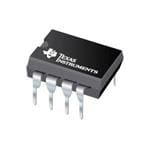
 Datasheet下载
Datasheet下载

